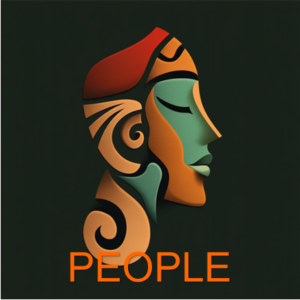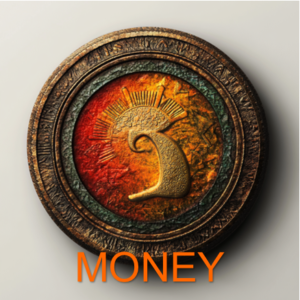
General Information About Visiting and Staying in Mindanao
Mindanao, the southernmost island group of the Philippines, is a region that offers a unique blend of adventure, culture, and natural beauty. Whether you’re visiting for a short vacation or planning an extended stay, Mindanao provides a wealth of experiences that cater to a variety of interests. Here’s a comprehensive overview to help you prepare for your journey to this captivating island.
For those interested in culture and history, Mindanao’s diverse communities offer a wealth of experiences. From the colorful Kadayawan Festival in Davao to the historic Fort Pilar in Zamboanga, there are countless ways to immerse yourself in the local culture. The island’s vibrant markets, traditional crafts, and local cuisine are also not to be missed.
For expatriates considering making Mindanao their home, cities like Davao, Cagayan de Oro, and General Santos offer a good mix of modern amenities and a more relaxed pace of life. The cost of living is generally lower than in Metro Manila, and the warm hospitality of the locals makes it easy to feel at home.

Mindanao is a place where natural beauty, cultural diversity, and a sense of adventure come together. Whether you’re visiting for a few days or planning to stay longer, this island offers a unique and enriching experience that will leave a lasting impression.

Safety in Mindanao has historically been a concern for travelers, particularly in areas with ongoing political tensions. However, many parts of the island are safe and welcoming to visitors, especially in well-known destinations like Davao City, Cagayan de Oro, and Siargao. Davao City, in particular, is known for its strict law enforcement and is often cited as one of the safest cities in the Philippines. It’s always advisable to stay informed about the current situation by checking travel advisories and consulting local sources before visiting.
When traveling in Mindanao, it’s essential to stay within areas that are known to be safe for tourists and avoid regions that are less stable, particularly in the western parts of the island. Traveling with a reputable guide or tour operator can also enhance your safety.
Mindanao is linguistically diverse, with several languages and dialects spoken across the island. Cebuano (Bisaya) is the most widely spoken language, especially in urban areas like Davao City and Cagayan de Oro. Tagalog (Filipino), the national language, is also commonly understood, particularly in more populated areas. English is widely spoken and understood, especially in cities, making it easy for most visitors to communicate and navigate.
In some regions, particularly in Muslim-majority areas, you may also hear Chavacano (a Spanish-based creole) and local languages like Maguindanao and Maranao. The diversity of languages reflects the rich cultural heritage of Mindanao, and learning a few basic phrases in Cebuano or Tagalog can go a long way in connecting with locals.
Mindanao is home to approximately 27 million people, making up about a quarter of the Philippines’ total population. The island’s population is a mosaic of different ethnic groups, with the Bisaya (Cebuano) being the largest. Other significant groups include the Maguindanao, Maranao, Tausug, and various Lumad (indigenous) communities.
The ethnic diversity in Mindanao is one of its defining features. The coexistence of Christian, Muslim, and indigenous communities has shaped the island’s unique cultural landscape. Visitors will find a mix of traditions, festivals, and cuisines that reflect this rich cultural tapestry.
The currency used in Mindanao, as in the rest of the Philippines, is the Philippine Peso (PHP). ATMs are widely available in urban centers like Davao City, Cagayan de Oro, and General Santos, and most accept international cards. Credit cards are also accepted in major hotels, restaurants, and shopping centers, though it’s advisable to carry some cash for use in rural areas and small establishments.
Currency exchange services are available at airports, hotels, and some banks. It’s a good idea to exchange some money upon arrival, especially if you plan to visit remote areas where these services may not be readily available.
Mobile phone coverage in Mindanao is generally good, especially in urban areas and popular tourist destinations. The major telecommunications providers in the Philippines are Globe and Smart, both of which offer prepaid SIM cards that are easy to purchase and use. SIM cards are inexpensive and can be bought at the airport or local stores.
For international travelers, roaming services are available, but using a local SIM card is often more cost-effective. Wi-Fi is widely available in hotels, cafes, and restaurants in cities, though the speed and reliability can vary. In rural areas, internet access may be limited, so it’s advisable to plan accordingly.
The availability of internet access in Mindanao varies depending on the location. In cities like Davao, Cagayan de Oro, and General Santos, you can expect reliable broadband connections, with many cafes and public spaces offering free Wi-Fi. For those staying longer, mobile internet plans from providers like Globe and Smart offer decent speeds and coverage.
In more remote or rural areas, internet access can be slower or less reliable. If staying in such areas, consider using mobile data as a backup. For digital nomads or those needing consistent internet for work, it’s best to stay in urban centers or check with your accommodation about their internet facilities before booking.
The standard voltage in Mindanao is 220V, and the frequency is 60Hz, with power outlets typically accepting Type A, B, and C plugs. Most urban areas have reliable electricity, but in some rural or remote areas, power outages can occur. It’s a good idea to have a portable charger or power bank for your devices, especially if you plan to travel outside the cities.









